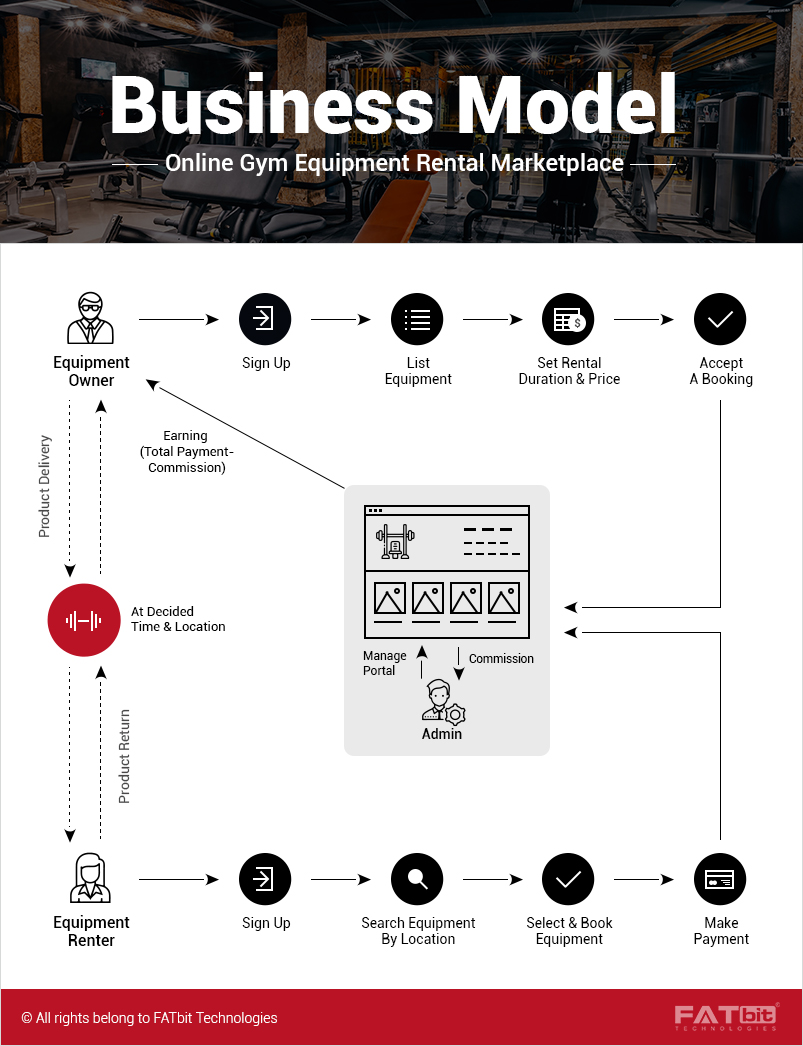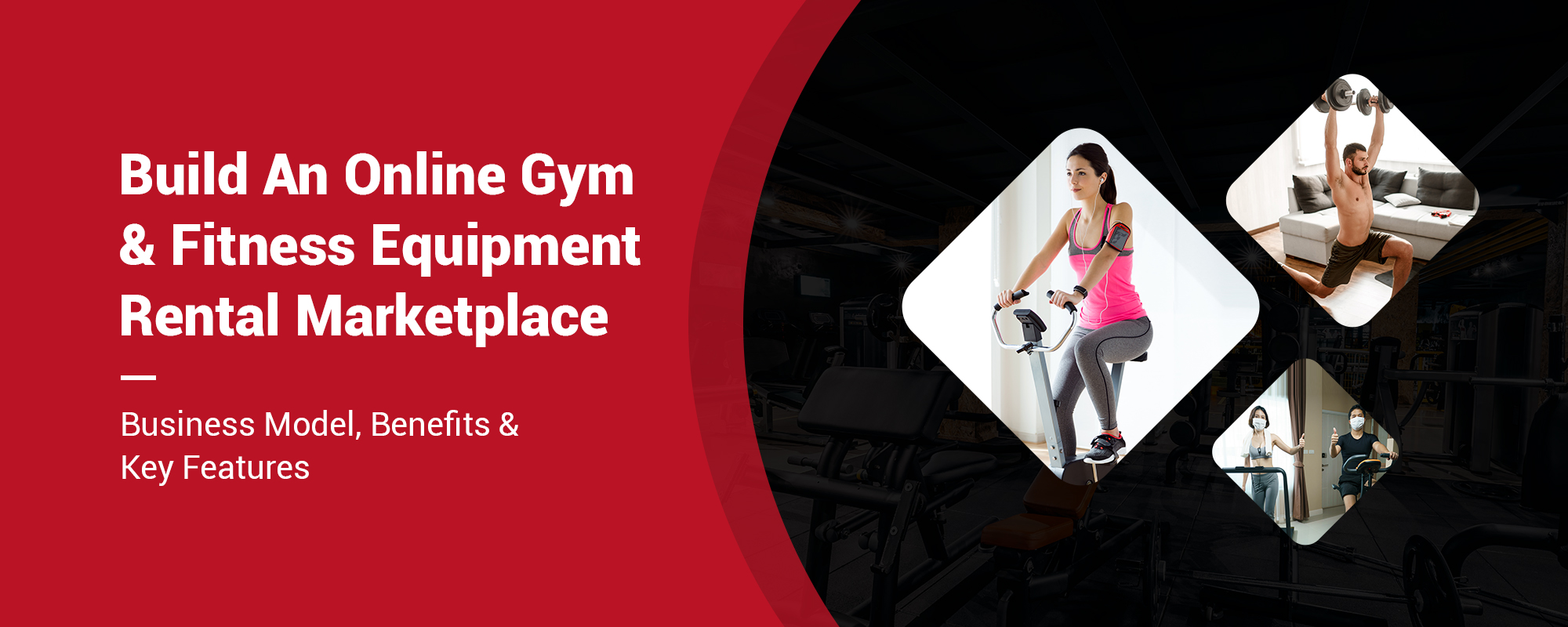It was only in 2019 that the global fitness industry was valued at nearly $100 billion. Driven by people’s growing urge to stay fit, look good and lead a healthy lifestyle, it has continued to experience incremental success in recent years. Gyms and fitness centers continue to foster a sense of community among the health enthusiasts, giving them the perfect environment to accomplish their fitness goals.
But come the winter of 2019, this perfect state of affairs would be greeted by an unprecedented and alarming prospect – the outbreak of Coronavirus in China. By the spring of 2020, the virus would speed its way across much of the inhabited planet, leaving only Antarctica unscathed. Governments around the world would enforce strict lockdowns and quarantine measures to stem the spread of infection. Social distancing would become the new norm, requiring people to maintain 4-6 feet of gap between each other.
Table Of Content:
Fitness Centers Bear The Brunt Of The Coronavirus Outbreak
Now gyms and fitness centers are such places where physical contact is very difficult to avoid. Much of the equipment constantly changes hands as people come and go to perform their workout. Keeping the equipment sanitized at all times is a challenging ask for gym owners. But skin contact isn’t the only problem; as people work rigorously to strain their muscles or spend some time in the sauna rooms, they work up an awful lot of sweat; and we all know dampness and humidity is the ideal breeding ground for the spread of the virus.
Therefore, it wasn’t a surprise when epidemiologists and other medical experts cautioned people from visiting gym centers. When the healthcare systems found their hands full with the spike in infection rate, the gyms and all the other places of public gathering were mandatorily required to be shut down. This has virtually sent the whole fitness industry in a state of stasis. Many gyms risk going out of operation if the pandemic can’t be controlled in time.
Online Fitness Equipment Rental – Why It Makes Sense Now?
The situation looks grim for both the gyms and their community members but in many places fitness studios have reacted to the challenge with a smart strategy – equipment rental. The idea is quite straightforward – if a gym can’t offer the use of its facilities, it should consider renting out some of its equipment to the clients who are stuck at home.
This rental model is practical for many reasons. We know quite well that at the start of the lockdown, the demand for gym equipment went so high that businesses soon had to dig deeper into their stocks. This is clear evidence that people were quick to realize that lockdown could be the new norm and it may take a while for gyms to reopen. That’s why ordering equipment to stay fit was a straightforward decision for many. But that demand is far from fulfilled and that serves as an ideal opportunity for gyms and fitness studios. – by renting out their equipment, gyms can create an influx of capital at a time when they’re unable to charge their clients.
Business Model Of Gym Equipment Rental Marketplace
As we briefly discussed earlier, an online gym equipment rental marketplace is mainly composed of gym owners and to a lesser degree individuals who possess an array of equipment that can be rented out to earn extra income.
Customers on the marketplace can view the listings based on their location and select the equipment they’d like to hire. Once a request is placed, the equipment owner needs to approve it. Upon approval, the rental money(after adjusting the commission charges) is transferred to the owner’s account.
While placing a request, the customer gets an option to select the shipping method – self pick up or doorstep delivery. To guarantee a safe return, a safety deposit is also deducted, which stays locked in the Admin’s account. This deposit is fully refunded once the equipment is returned safely and on time to the owner.

Revenue Generation Model Of Online Gym Equipment Rental Marketplace
A gym equipment rental marketplace can generate revenue from multiple channels. The great thing about owning a gym online marketplace is that the owner can list and make money off the rented equipment much like all the other vendors on the platform. However, unlike other vendors, the owner isn’t subject to commission fee, which enables maximum profit generation from each transaction. Other major ways to generate revenue as are follows:
- Commission: The owner receives a commission for every transaction that takes place on his/her gym equipment rental marketplace.
- Advertising: The owner can invite advertisers to publicize their products/services on the marketplace. The cost of adverts can be calculated on view/click basis.
- Featured Listing: Vendors can be offered a premium feature to list their products under a ‘Featured Equipment’ section, which serves as the initial focus area of the website for new visitors.
- Subscriptions: Marketplace owner can create a set of subscriptions plans with a range of benefits such as free delivery, fixed discount on eligible orders and so on.
If you wish, you could allow vendors the selling option for their gym equipment. This will add another revenue generation stream to your marketplace. There’s often a case where rentees satisfied with the use of a certain equipment might wish to own it. A selling option would be ideal for such scenarios.
Generate Revenue via Multiple Revenue Streams with Yo!Rent V3
Key Players In The Gym Equipment Rental Segment
Gym and fitness equipment rental isn’t something new, even in the online world. While their mode of operations may have been different, there are plenty of businesses that have been renting out gym equipment even before the start of the Coronavirus outbreak. Some of the major players in the market are as follows:

- A.E.S Fitness (https://aesfitness.com/fitness-equipment-rental)
- FitDel (fitdel.com/)
- EasyFitness (easyfitness.ca/)
- GymLend (https://gymlend.com/)
- HireFitness (https://www.hirefitness.co.uk/)
YoRent powered fitness equipment rental marketplace- Big Fitness (https://bigfitness.com/) Explore Case Study
Our focus, however, is GymLend, since it works exactly on the basis of the business model we’ve just discussed. GymLend was set up in Australia by two Sydney-siders in view of the COVID-19 crisis. The response it received was massive from the word go, as the platform’s co-founder said “more than 30 gyms Australia wide signed up to hire out their equipment”, taking the total listings to 660 in a short amount of time.
Gyms can rent out as much equipment as they like, and set prices for everything from resistance bands, dumbbells to squat racks, treadmill, cycling bikes and rowing machines. The platform also supports creating a bundle of gears like a range of weights, a mat and foam roller. Consumers search for the equipment based on their location and can hire on a weekly or fixed term basis.
Key Features To Have In A Gym & Fitness Equipment Rental Marketplace
Now, building a gym equipment rental marketplace can seem a momentous task at the beginning. But if you break it down into small milestones, the going tends to get easier. While creating a marketplace, it’s crucial to get the right kind of features that your website users will come to use. Following is a guide about the most important ones and their application.
Homepage
The homepage should be designed with your target audience in mind. This includes both the customers and vendors(gym equipment owners), since without any vendors you won’t have any customers. The design shouldn’t be too complex, it should enable quick navigation and browsing. The homepage shouldn’t be overly lengthy. Instead it should provide just the vital information but in brief. That can include:
- Banner: A banner with a captivating image and a strong message to send positivity to the end user along with one or two CTAs – ‘Browser Equipment/Post Equipment.’
- Equipment Near You: This section will immediately catch the user’s attention by displaying the variety of equipment available near his/her location.
- How it Works: This section should be placed to help a customer quickly understand the rental process. The process is often best illustrated using vector graphics and complimentary text.
- Posting a Gear: This section should provide an overview of the listing, booking and payment process to help vendors understand how the platform works for them. Similar to how it works, this section can be illustrated using graphics and text.
Gym Equipment Rental Page
This will be one of the most frequently visited pages on your website. This is where customers will come to browse the listings and find the equipment they’re looking for. This page should contain the following elements:
Filters are there to make the search easier and you’ll need a few of them on your gym equipment rental website. For location some websites opt for a map that uses a pin or a balloon with a number on it, indicating the equipment/stores available in a given location. The other approach is to offer a list of cities using a drop-down menu. Both approaches seem to be quite practical. Besides locations, some other filters to have on the page are:
- Item Category: Based on the inventory, the options can range anywhere from treadmill, benches, weight bars, dumbbells, to cardio machines, cycling bikes, resistance bands and mats.
- Price: To help users select the lowest and highest price range for the equipment search.
- Weight: To help users select a low and high weight range for equipment search.
- Search: User can use the search bar to enter a specific keyword, for eg. dumbbell, to bring up all the listings associated with it.
High-quality images should be used to show the listed equipment in all its little details. Usually, 4 or 5 images, all shot from different angles should be provided for the user to have a closer look at the equipment’s condition.
Under the equipment’s image, the rental price should be specified along with the vendor’s name offering that equipment.
Product Information Page
This page should provide in-depth information about the selected equipment. This should include the following:
- About the equipment: This field should provide detailed information about what the equipment is, how it can be used for different types of exercises, the people who can benefit most from it and so on.
- Category: This field should specify the category to which the equipment belongs like weights, bars & dumbells.
- Brand: This field should provide the name of the company that originally manufactured the equipment.
- Condition: This field should provide information about the current state of the equipment – new, old, used etc.
- Weight: This field should denote the exact weight of the equipment.
- Delivery or Pick up: This field should state the delivery options available for the equipment such as doorstep delivery or pick up only.
- Location: This field can use a map to show the area where the equipment is currently in store.
- Vendor’s Contact: This field should provide the contact information of the equipment owner/vendor.
- Reviews: This field should present the reviews received by the previous users of the selected equipment.
Booking Form
A booking form is the key link in the transaction process and as such it should be easy and quick to fill out. Here are some details that could be requested in a booking form:
- Rent Start Date: A calendar should come up under this section to help a user quickly select the rent state date.
- Rental Period: User should be able to select the options such as weekly, monthly from a drop menu.
- Delivery or Pick Up: Based on the user’s preference, he/she should be able to select the ideal delivery option.
- Collection or Return: Similarly based on his/her preference, the user should be able to select ‘self return’ or ‘collect from door option.’
- Rental Breakdown: Once the user has provided all the aforementioned details, he should be able to see a complete breakdown of the rental booking cost.
Wrap Up
The demand for gym equipment rental has soared with the outbreak of Coronavirus and the subsequent lockdown measures. Setting up a gym and fitness equipment rental marketplace with a business model and the various features discussed in this blog is a great way to cater to that growing demand.
Since time is of essence and if you’re thinking of quickly building an online gym equipment rental marketplace, a white-label solution like YoRent would come in handy. YoRent is built with the experts’ insights and by experienced programmers to launch a feature-rich and exquisitely designed online rental marketplace. If you have any questions related to the information shared in this blog or need expert advice to set up your gym equipment marketplace, please feel free to drop a message in the comments section below.
It’s Easy to Build a Gym Equipment Rental Marketplace With Yo!Rent








Comments (4)
 MD Alamin
MD Alamin
 kevin Eliott
kevin Eliott
 John william
John william
 Merry Jack
Merry Jack
Launching a gym equipment rental platform is a lucrative idea but the truth is B2B dealings and partnerships will earn more than renting out to general people. Think about it, the number of commercial gyms is rising and they’ll rent equipment for long terms, highlighting a big business opportunity. To earn more, a commercial gym equipment rental company can also provide repairing service.
It’s an amazing! tips and very helpful for everyone . Thanks for share
It is a good article and quite helpful too.
Thank you for sharing such amazing.